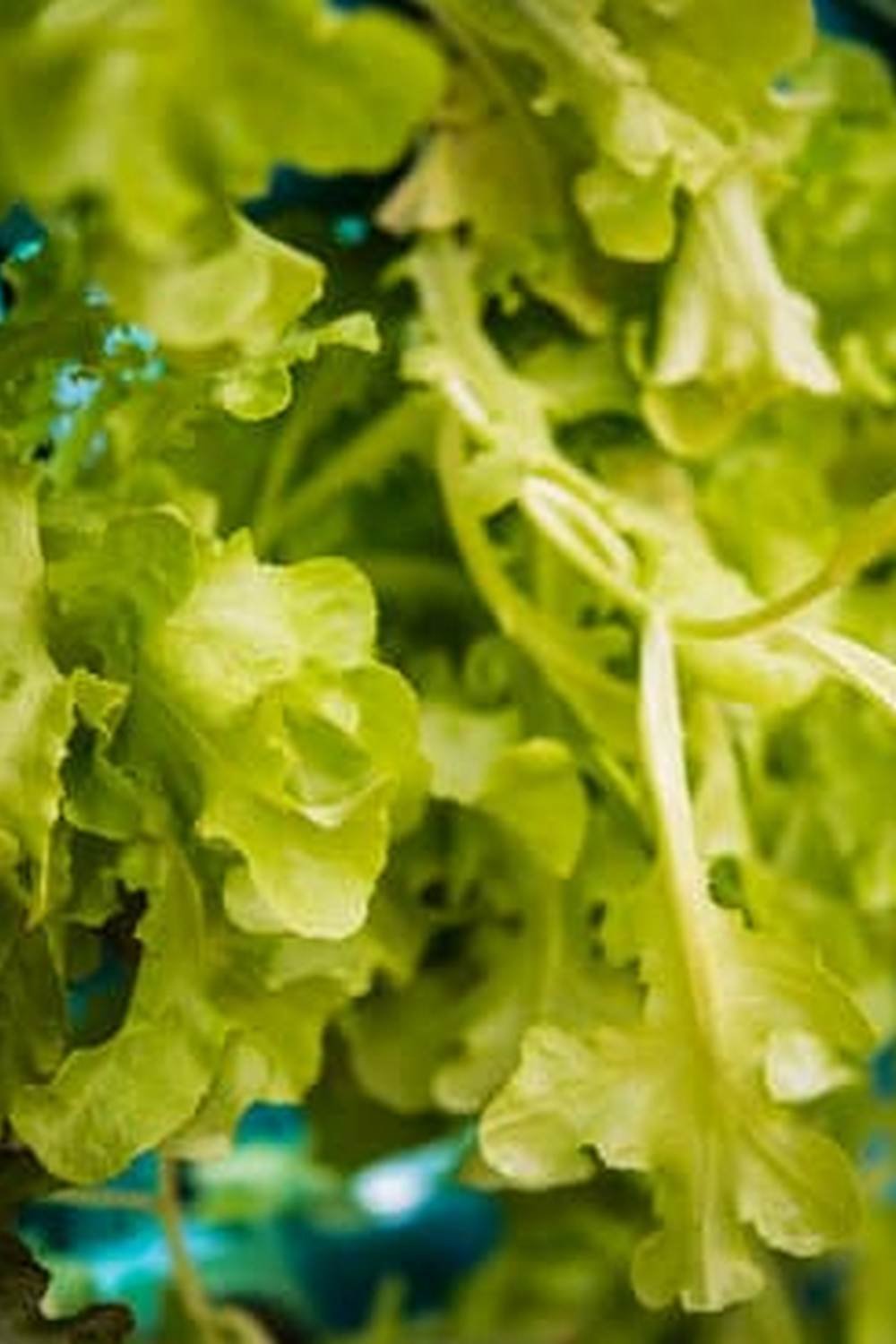Gardening vegetables indoors has become a popular trend for many individuals looking to enjoy the benefits of fresh produce right in the comfort of their own homes. With limited space and unpredictable weather conditions, indoor vegetable gardening provides a practical solution for those eager to cultivate their own vegetables year-round. Whether you live in a city apartment or a suburban home, indoor gardening allows you to connect with nature and enjoy the satisfaction of growing your own food.
One of the key advantages of gardening vegetables indoors is the ability to control various environmental factors such as temperature, light, and humidity. This level of control allows you to create an optimal growing environment for your plants, ultimately leading to healthier and more robust vegetables. Additionally, indoor gardening provides a convenient option for those who may not have access to outdoor garden spaces or face limitations due to physical constraints or mobility issues.
Furthermore, by bringing the beauty and abundance of nature into your living space, indoor vegetable gardening can also enhance your overall well-being and quality of life. Studies have shown that interacting with plants can reduce stress levels, improve air quality, and boost mental health.
Whether you are a seasoned gardener or new to the world of horticulture, cultivating vegetables indoors offers a rewarding experience that can be enjoyed by individuals of all ages and backgrounds. With the right knowledge and resources, anyone can embark on this fulfilling journey towards self-sufficiency and sustainable living through indoor vegetable gardening.
Benefits of Indoor Vegetable Gardening
When it comes to gardening vegetables indoors, there are numerous benefits that make it a fantastic idea for anyone looking to grow their own produce. One of the primary advantages is the ability to have fresh, organic vegetables right at your fingertips year-round, regardless of the season or weather conditions outside. Indoor vegetable gardening also allows you to have more control over factors such as sunlight, temperature, and soil quality, resulting in healthier and more productive plants.
In addition to providing a convenient and consistent supply of fresh produce, indoor vegetable gardening can also help save money in the long run. By growing your own vegetables at home, you can significantly reduce your grocery bill while enjoying the satisfaction of knowing exactly where your food comes from and how it was grown.
Furthermore, indoor gardening is a great way to engage with nature and reduce stress levels, as caring for plants has been proven to have a calming effect on individuals.
Another benefit of indoor vegetable gardening is that it allows you to experiment with a wider variety of plant species and hybrids that may not be suitable for outdoor cultivation in your region. This opens up opportunities to grow unique and exotic vegetables that are not commonly found in stores, expanding your culinary horizons and adding diversity to your diet.
Overall, the benefits of gardening vegetables indoors extend beyond just the harvest – they encompass improved health, environmental consciousness, and a deep connection with nature right in your own home.
Choosing the Right Vegetables for Indoor Gardening
Growing vegetables indoors can be a rewarding and fulfilling experience for any gardening enthusiast. When selecting the right vegetables for your indoor garden, it is essential to consider the space available, lighting conditions, and your personal preferences. Some vegetables are better suited for indoor growing than others due to their growth habits and adaptability to indoor environments.
One of the key factors to consider when choosing vegetables for indoor gardening is the amount of light they require. Vegetables like tomatoes, peppers, and herbs thrive in direct sunlight and may need supplemental grow lights if not receiving enough natural light indoors. On the other hand, leafy greens such as lettuce, spinach, and kale can tolerate lower light conditions and are well-suited for indoor cultivation.
When deciding which vegetables to grow indoors, consider your available space and the size of mature plants. Compact varieties like bush beans, cherry tomatoes, and mini bell peppers are ideal choices for limited space. Additionally, herbs like basil, parsley, and chives can be grown in small pots on a sunny windowsill or under artificial grow lights.
In addition to considering space and lighting requirements, think about what vegetables you enjoy eating the most. Growing your favorite veggies indoors can not only save you money but also provide you with a fresh supply of homegrown produce all year round. Experimenting with different varieties and trying new vegetables can add excitement to your indoor gardening experience while broadening your culinary horizons.
| Vegetable | Light Requirements |
|---|---|
| Tomatoes | Direct sunlight or supplemental grow lights |
| Lettuce | Tolerates lower light conditions |
| Basil | Sunny windowsill or artificial grow lights |
Setting Up Your Indoor Vegetable Garden Space
When it comes to setting up your indoor vegetable garden space, there are a few key considerations to keep in mind. Firstly, you’ll need to choose a location that receives ample sunlight for your plants to thrive. South-facing windows typically provide the best light exposure for indoor plants. If natural light is limited in your space, you may want to consider investing in grow lights to supplement the light requirements of your vegetables.
Once you’ve identified the best location for your indoor vegetable garden, it’s important to select containers that are suitable for growing vegetables indoors. Opt for containers that have drainage holes to prevent waterlogging and ensure good soil drainage. Additionally, consider the size of the containers based on the mature size of the vegetables you plan to grow. Here are some container options to consider:
- Plastic or terracotta pots
- Hanging baskets
- Grow bags
- Window boxes
In addition to choosing the right containers, you’ll also need to select a high-quality potting mix specifically formulated for vegetable gardening. Look for a mix that provides good aeration and drainage while also retaining moisture – crucial elements for healthy plant growth. Avoid using garden soil from outdoors, as it may contain pests and diseases that can harm your indoor vegetable plants.
Lastly, consider organizing your indoor vegetable garden space in a way that maximizes efficiency and accessibility. Arrange your containers in a way that allows easy access for watering, pruning, and harvesting. Consider grouping together plants with similar water and light requirements to simplify care routines. By carefully planning and setting up your indoor vegetable garden space, you’ll create an environment where your vegetables can flourish and thrive.
Essential Tools and Supplies for Indoor Gardening Vegetables
When it comes to gardening vegetables indoors, having the right tools and supplies is essential for a successful indoor garden. Whether you are a beginner or experienced gardener, having the proper equipment will make your indoor gardening experience more efficient and enjoyable. Here is a list of essential tools and supplies that you will need to start your indoor vegetable garden:
- Containers: Choose containers that have drainage holes to prevent waterlogging. Opt for containers made from materials like plastic, ceramic, or terra cotta.
- Soil: Use a high-quality potting mix that is specifically formulated for indoor plants. Avoid using garden soil as it may contain pests and diseases.
- Lighting: Since natural sunlight may not always be sufficient for indoor plants, consider investing in grow lights to provide the necessary light for your vegetables.
- Watering can: A small watering can with a narrow spout will make it easier to water your plants without causing water damage.
In addition to these basic tools and supplies, you may also want to consider adding fertilizers, plant supports, and organic pest control products to your indoor gardening arsenal. These additional items can help promote healthy growth and protect your vegetables from common pests and diseases. By having the right tools and supplies on hand, you can ensure that your indoor vegetable garden thrives throughout the growing season.
Remember to regularly check on your tools and supplies to ensure they are in good condition and replace any worn-out or damaged items as needed. Proper maintenance of your gardening equipment will help you continue enjoying the benefits of gardening vegetables indoors for years to come.
Techniques for Maintaining and Caring for Indoor Vegetables
Growing vegetables indoors can be a rewarding experience, but it also requires proper care and maintenance to ensure the health and success of your plants. Here are some techniques you can implement to help your indoor vegetable garden thrive:
Watering
One of the most crucial aspects of caring for indoor vegetables is ensuring they receive adequate water. It’s essential to strike a balance – too little water can lead to wilting and stunted growth, while overwatering can cause root rot. Be sure to check the moisture levels in the soil regularly and adjust your watering schedule accordingly.
Light Exposure
Light is essential for plant growth, so providing sufficient light for your indoor vegetables is crucial. Place your plants near windows where they can receive natural sunlight or invest in grow lights to supplement their light intake. Rotate your plants regularly to ensure all sides receive equal exposure, preventing them from leaning towards one direction.
Temperature and Humidity
Maintaining the right temperature and humidity levels is vital for the health of your indoor vegetable garden. Most vegetables prefer temperatures between 65°F to 75°F during the day and slightly cooler at night. Invest in a thermometer and humidifier if necessary to create an optimal environment for your plants. Additionally, good air circulation can help prevent common issues like fungal diseases.
By implementing these techniques for maintaining and caring for your indoor vegetables, you can enjoy a thriving garden full of delicious produce year-round. Remember that each plant has its own specific needs, so it’s essential to research individual requirements for the best results in gardening vegetables indoors.
Troubleshooting Common Issues in Indoor Vegetable Gardening
Pest Management
One common issue that indoor vegetable gardeners may encounter is pest infestations. Even though you are growing your vegetables indoors, pests such as aphids, spider mites, and whiteflies can still find their way in. To prevent and address pest problems, regularly inspect your plants for signs of infestation. You can use natural remedies like neem oil or insecticidal soap to control pests without harming your plants or the environment.
Disease Prevention
Diseases can also be a challenge for indoor vegetable gardens. To prevent the spread of diseases, it is essential to practice good hygiene by cleaning your gardening tools regularly and ensuring proper air circulation around your plants. Prevent overwatering and allow the soil to dry out between watering sessions to discourage fungal growth. If you notice any signs of disease on your plants, promptly remove and dispose of the affected parts to prevent further spreading.
Lighting Issues
Another common issue in indoor vegetable gardening is inadequate lighting. Insufficient light can lead to leggy growth, weak plants, and poor fruit development. To ensure that your vegetable plants thrive indoors, invest in proper grow lights or place them near a sunny window where they can receive at least 6-8 hours of sunlight per day. Rotate your plants regularly so that all sides receive adequate light exposure for even growth and development.
Harvesting and Enjoying the Fruits of Your Indoor Vegetable Garden
After putting in the effort to grow your own vegetables indoors, it is finally time to enjoy the fruits of your labor. One of the greatest joys of indoor vegetable gardening is being able to harvest fresh produce right from your home. Whether it’s plucking a ripe cherry tomato off the vine for a snack or gathering a bunch of leafy greens for a delicious salad, there is something truly satisfying about eating food you have grown yourself.
When it comes to harvesting your indoor vegetables, timing is everything. Make sure to keep an eye on the growth progress of your plants and harvest them at the peak of freshness.
Different types of vegetables may require different methods of harvesting – from cutting leafy greens like spinach and lettuce at their base to gently twisting tomatoes off the stem. By being attentive and harvesting your vegetables at the right time, you can ensure that they are flavorful and nutrient-rich.
Not only does indoor vegetable gardening provide you with fresh, organic produce right at your fingertips, but it also offers a sense of accomplishment and connection to nature. The act of caring for plants and watching them grow can be therapeutic and rewarding. So, take pride in your indoor vegetable garden, savor every bite of those homegrown veggies, and continue to nurture your green thumb for many more fruitful harvests to come.
| Indoor Vegetable Gardening Benefits | Benefits |
|---|---|
| Freshness | Harvest fresh produce at home |
| Satisfaction | Eat food you’ve grown yourself |
| Therapeutic | Caring for plants can be rewarding |
Conclusion
In conclusion, gardening vegetables indoors is a rewarding and fulfilling endeavor that allows individuals to enjoy the benefits of fresh produce right at their fingertips. The joy of tending to your indoor vegetable garden and watching your plants thrive is truly unmatched. Not only does indoor vegetable gardening provide a sense of accomplishment, but it also promotes a healthier lifestyle by encouraging the consumption of homegrown, nutritious vegetables.
With the right vegetables chosen for indoor gardening, proper set-up of the indoor garden space, and essential tools and supplies on hand, anyone can successfully grow vegetables indoors. By implementing techniques for maintaining and caring for indoor vegetables, such as providing adequate light, water, and nutrients, individuals can ensure a bountiful harvest. Additionally, being aware of common issues in indoor vegetable gardening and knowing how to troubleshoot them will help avoid potential setbacks in the growth of your plants.
As you harvest your indoor vegetables and savor the delicious flavors they bring to your meals, you’ll find yourself fully immersed in the gratifying experience of gardening vegetables indoors. Embracing this joyous process not only allows you to connect with nature but also brings a sense of tranquility and fulfillment to your everyday life. So go ahead, start your own indoor vegetable garden today and reap the numerous rewards it has to offer.

If you’re looking to get into vegetable gardening, or are just looking for some tips on how to make your current garden better, then you’ve come to the right place! My name is Ethel and I have been gardening for years. In this blog, I’m going to share with you some of my best tips on how to create a successful vegetable garden.





